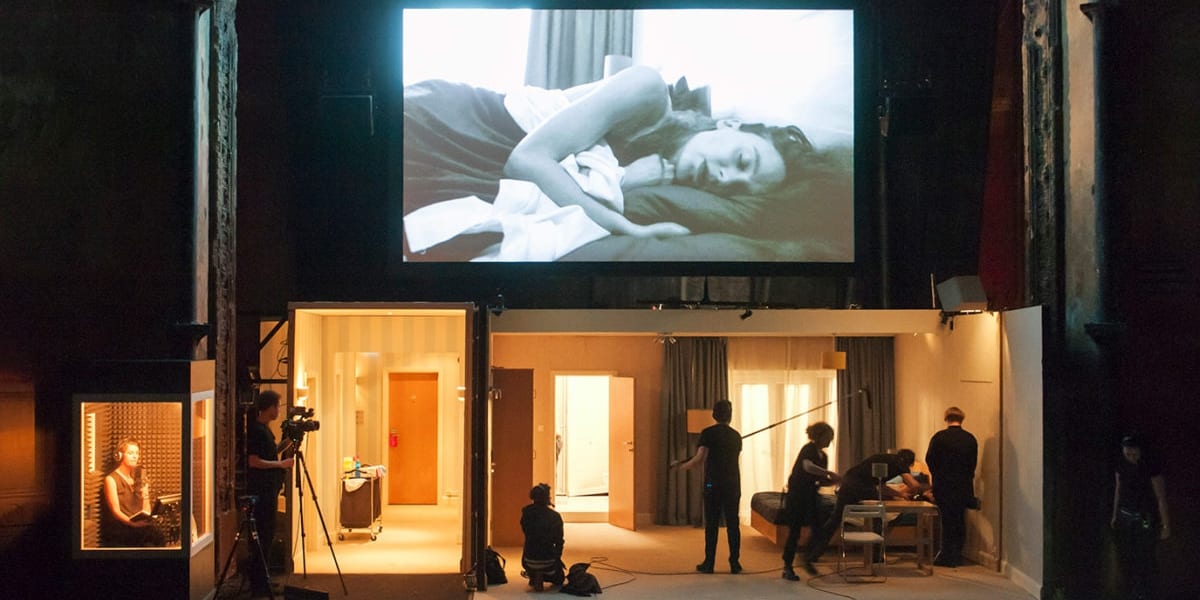La Maladie de la Mort is another collaboration between the playwright Alice Birch and the director Katie Mitchell – perhaps Britain’s most highly renowned theatre maker. Birch is herself now firmly established as a leading playwright and screenwriter – following the success of her screenplay Lady Macbeth, directed by William Oldroyd, on top of critically acclaimed productions at the RSC, the Almeida and the Royal Court in the past few years. So, it’s fair to say that La Maladie de la Mort is a bit of an event in the theatre calendar.
This play is an adaptation of a novella by Marguerite Duras, written in the early 1980s. It’s about an unnamed woman who agrees to prostitute herself to an unnamed man, determined to experience what it feels like to love. Ultimately, the woman concludes that the man cannot artificially generate feelings of this kind, and that he is in fact incapable of affection – suffering from what she describes as a kind of death sickness (hence the novella and the play’s title).
Birch’s adaptation places a greater emphasis on the woman’s side of the story: she is a sex worker, a single mum, and revelations about the suicide of someone close suggest that she might be suffering from a similarly morbid malady.
Birch’s attempt to correct this masculine-orientated piece, however, results in a production that feels curiously unfocussed, with the most compelling parts of the story left unexplained, whilst added backstories compete unsuccessfully for our attention.
So long as La Maladie de la Mort remains tied to Duras’s story, the man’s torment remains the crux of the narrative. Watching this production, we can’t help being preoccupied with questions about his predicament: how is he foolish enough to believe that a simulation of love might ever be possible?
Out of the behaviour of the two characters, performed powerfully by Laetitia Dosch and Nick Fletcher, the man’s is the most unusual, whilst at the same time being the most recognisable, and the most disturbing. It’s as irrational as it is terrifying. It seems the devil, after all, has the better tunes.
In spite of dramaturgical issues, La Maladie de la Mort remains a tour de force of a production. Mitchell’s staging concept is a continuation of the expanded-cinema approach she has spent years perfecting: we see the story narrated from a sound booth, watch as a crew of technicians shoot the actors’ performances and then are presented with a kind of split-staging effect, with a screen presenting the filmed version of scene-work that is concurrently visible beneath it. It’s visually stunning as always, and (as always) encourages us as the spectator to adopt an interrogative position rather than to just lazily accept what we’re watching.

